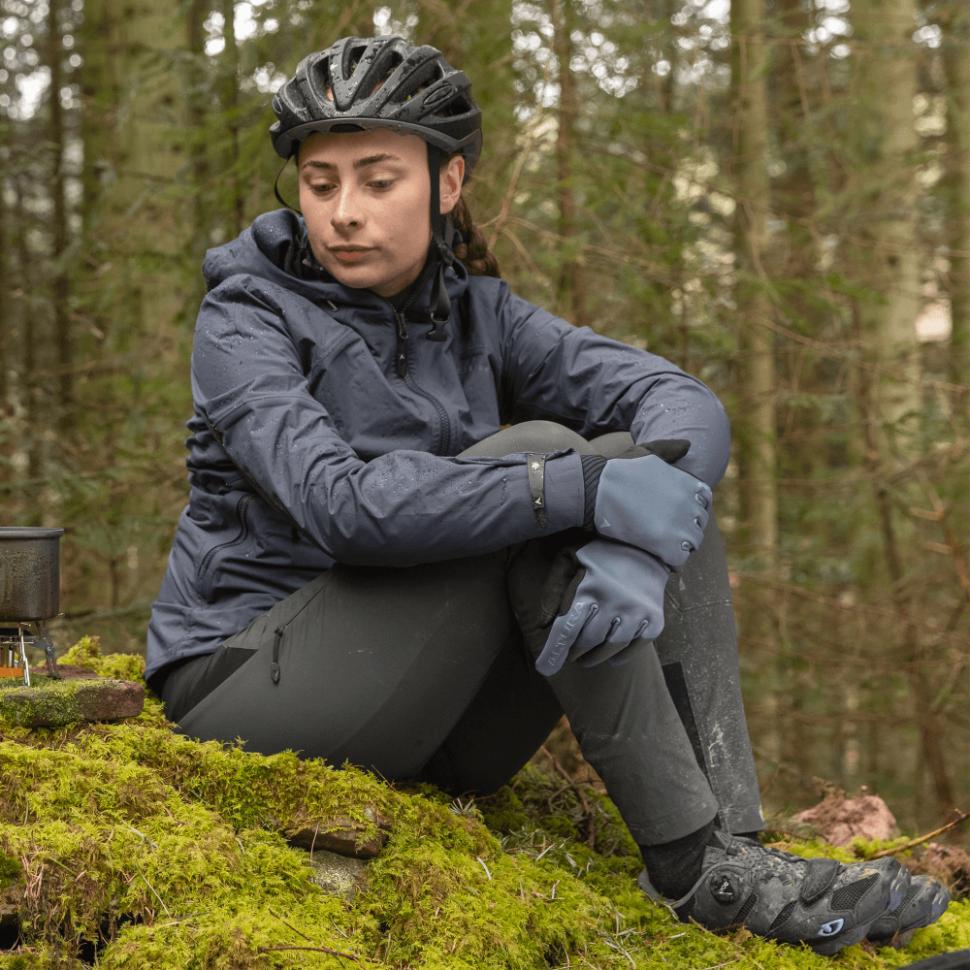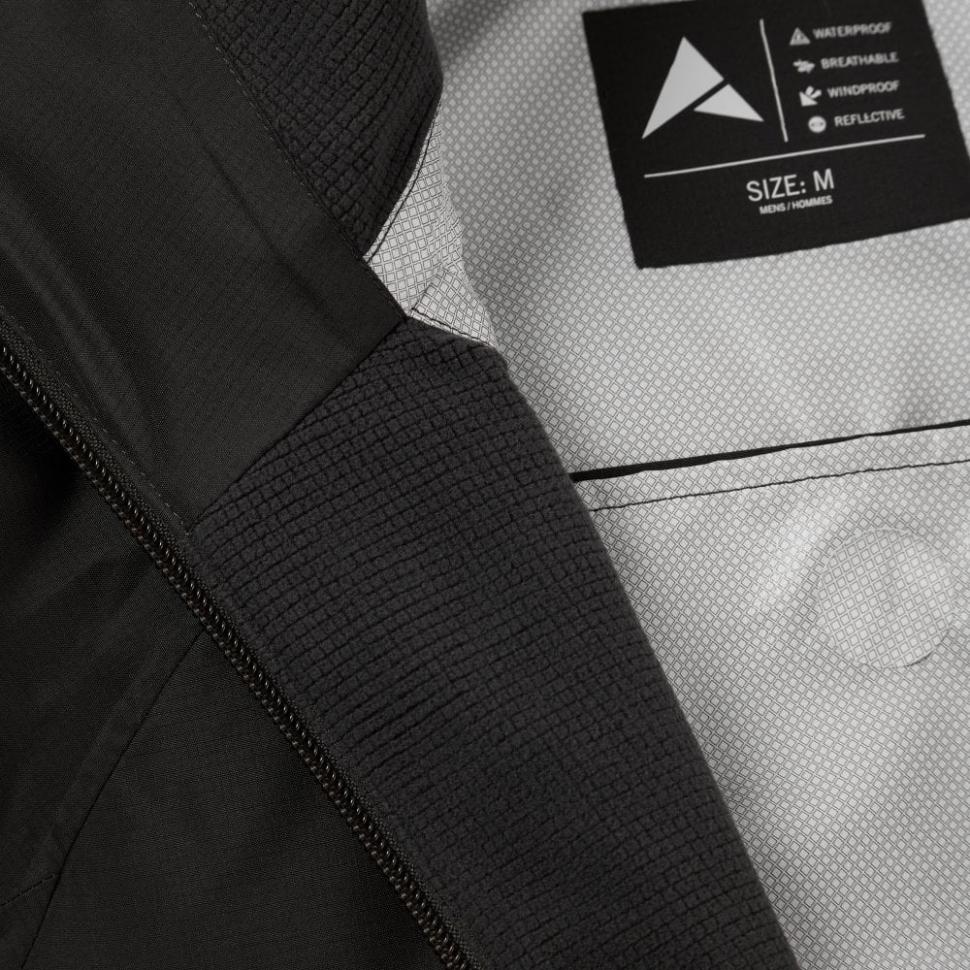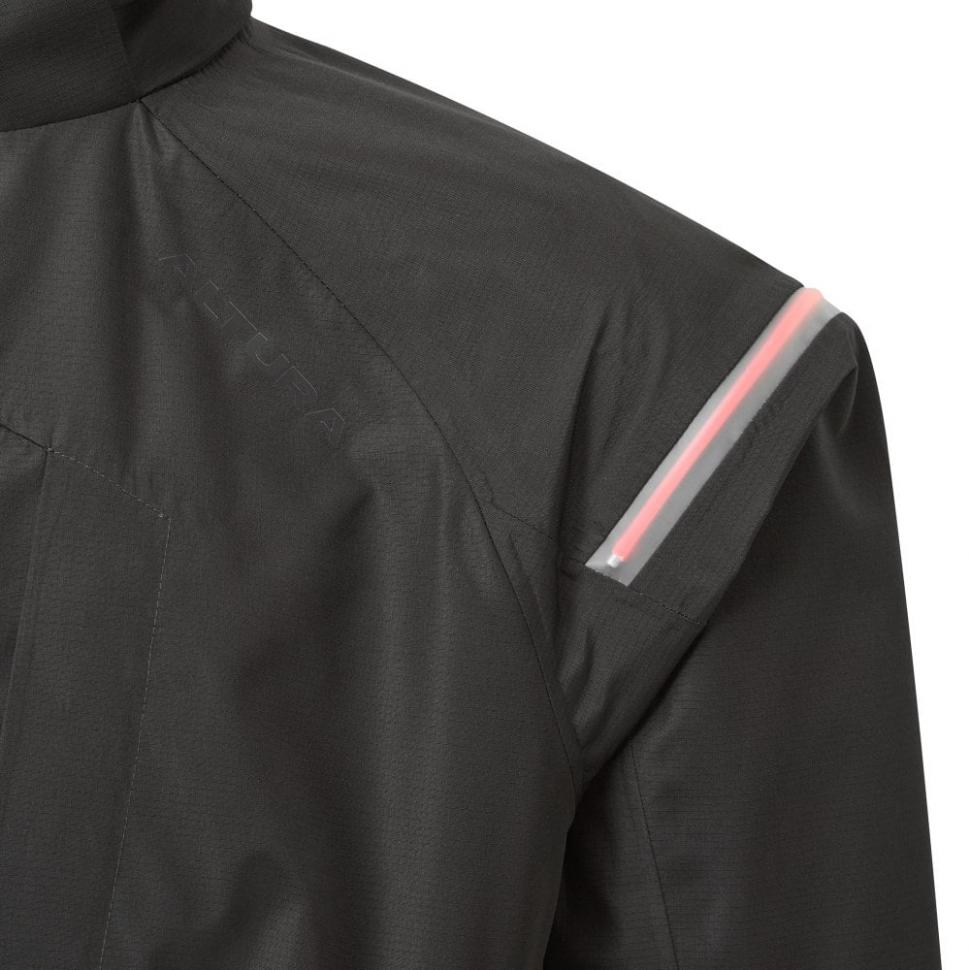- News
- Reviews
- Bikes
- Accessories
- Accessories - misc
- Computer mounts
- Bags
- Bar ends
- Bike bags & cases
- Bottle cages
- Bottles
- Cameras
- Car racks
- Child seats
- Computers
- Glasses
- GPS units
- Helmets
- Lights - front
- Lights - rear
- Lights - sets
- Locks
- Mirrors
- Mudguards
- Racks
- Pumps & CO2 inflators
- Puncture kits
- Reflectives
- Smart watches
- Stands and racks
- Trailers
- Clothing
- Components
- Bar tape & grips
- Bottom brackets
- Brake & gear cables
- Brake & STI levers
- Brake pads & spares
- Brakes
- Cassettes & freewheels
- Chains
- Chainsets & chainrings
- Derailleurs - front
- Derailleurs - rear
- Forks
- Gear levers & shifters
- Groupsets
- Handlebars & extensions
- Headsets
- Hubs
- Inner tubes
- Pedals
- Quick releases & skewers
- Saddles
- Seatposts
- Stems
- Wheels
- Tyres
- Health, fitness and nutrition
- Tools and workshop
- Miscellaneous
- Buyers Guides
- Features
- Forum
- Recommends
- Podcast
 Altura Electron Jacket
Altura Electron JacketHow to choose the perfect winter cycling jacket

This article includes paid promotion on behalf of Altura
When it comes to year-round cycling and especially cycle commuting, no bit of kit becomes a more valued constant companion and old friend than your waterproof jacket. But how do you go about picking the right jacket for you, and what do all those tech features and references to breathability and waterproofing really mean?
With almost 25 years in the cycle clothing business, Altura’s Darlington-based design team knows exactly what abilities British riders require in their winter jackets and the full range of conditions that UK cyclists need to be protected from. But as the face of commuting, in particular, has changed in recent years, the performance of cycling outer layers has never been more dynamic and varied.
We spoke to Head of Altura, responsible for Design and Development, Amy Spencer about what riders should look for when it comes to buying a waterproof jacket, and we get the inside tech scoop on Altura’s revolutionary new self-illuminating Electron jacket.
So let’s start with the basics - what does every cyclist need to think about when buying a waterproof jacket?
"The first thing is to understand what you want the jacket for: fast road cycling, typical commuting or multi-purpose urban use? We compare our road category jackets to our commuter category jackets – you can still commute in a road jacket but they tend to be best if you're commuting for training or fitness," Amy says.
"If you’re looking to cycle commute at a more relaxed pace, there are all sorts of other considerations to take into account. This is especially because commuting has changed massively over the past two years, not just because of Covid and environmental awareness, but because of things like the increased use of e-bikes and the massive e-scooter hire boom.
Check out Altura's men's Urban Collection here
"Whatever type of cycling you’re doing, you still want a weatherproof jacket that is quite lightweight and breathable. Even if you are cycling to work and you aren’t necessarily going to get super-hot in the same way as you would if you were hard road riding, you still want some breathability, some venting, and some air movement so that perspiration doesn’t start to condensate and you feel moisture on the inside.
"Then you want taped seams to keep you waterproof from the outside, and you also want a water-repellent coating on the outside. The water repellent coating helps to keep your jacket breathable. The coating is not the waterproof part of your jacket – the waterproof part is the inner membrane, the water blocker – but the water repellent coating helps to create beading on the outside of the jacket. That helps to deflect the water away from the fabric so that it doesn’t go into the fabric and then block the breathability."
A lot of your jackets use DWR (durable water repellent) waterproofing – is that the best option for commuters?
"Yes, but it has to be used in conjunction with a waterproof membrane," says Amy.
"When it comes to waterproof fabric options, we refer to them as 2-layer, 2.5-layer or 3-layer fabric. 2-layer is where you have an outer fabric and you can see the waterproof membrane on the inside. We can choose different fabrics and membranes – there are all sorts of options – and they are then bonded together.
"2.5-layer is membrane and fabric, but on the membrane there is a printed pattern which stops the sticky feel of the membrane against the skin. Then 3-layer is a very thin inner fabric or mesh layer, the membrane and then the outer fabric. That feels even less sticky against the skin.
"But it’s the membrane that gives the jacket the waterproof rating, while the water-repellent coating to the outer layer just provides an element of water resistance."
When we see waterproofing rated as 10K, or 8K or whatever, what does that mean?
"Those are different standards to measure the hydrostatic head. That involves a water column of a certain size and a certain height on your fabric. The number before the ‘K’ refers to the depth or pressure of water that the fabric or membrane can withstand before it breaks through."
What about breathability and insulation?
"We’ve developed all our jackets with a certain level of breathability, even our urban or commuting jackets, so they will keep you warm on a slightly slower-paced ride or a scooter ride to work where you’re not generating the same level of heat. With all our jackets, we think about that first hit of wind in the chest and torso, so there is a level of protection from elements there," Amy says.
"We also have a softshell in the range that provides a lot of stretch, so you can be really comfortable. There are lots of different options in our range to offer something for everyone, whatever type of riding they do. The thing is, if you’re dedicated to commuting to work, you need a jacket that is going to protect you no matter what the weather throws at you."
That idea of stretch is important – how do you ensure a jacket’s cut and fit is just right?
"For better comfort on the bike, we trim away excess fabric from across the chest without it feeling tight, and then we put more fabric to expand across the back. Hip-length jackets are cut slightly higher at the front, with a dip at the rear. Then we fit slightly longer sleeves so riders’ arms are comfortably covered when they reach for the handlebar. While they look great when you stand up straight, we’ve also cut our jackets so that they're not restrictive when you’re cycling. A lot of detail and geeking out goes into the fit of the jackets!" Amy says.
"We have a different fit with our road range compared to our urban range, but even our urban range is still not as loose a fit as, say, a high street clothing brand’s casual fit. That’s because the people who wear our jackets are going to be on a bike, and if you’re cycling at any great speed, the sound of flapping fabric can get really annoying and it starts to bellow out and create drag.
"So our urban clothing has what is called a relaxed fit, but it’s still a very technical fit – it should never be like a big baggy anorak because then you will start to get a lot of movement in the jacket. Our road fit is then a lot closer to the body and we have to incorporate a lot more stretch in the fabric to help it fit better."
What differences are there in a jacket design for women?
"A female-specific jacket will be graded at the chest and the hips and that grade will change slightly depending on the size. So as you go up to a size 16 or 18, the grade is actually bigger, but when you go down to a size 8 or 10, the grade is slightly smaller – it’s not as hippy or as busty," Amy says.
Take a look at Altura's women's Urban Collection here
"We also make other slight differences. For example, we have the Twister insulated jacket and the women’s version of that is noticeably longer than the men’s. The reason for that is we want people to feel comfortable riding bikes, but when you’re spending more than £100, you also want to be able to wear that jacket when you’re not cycling. So the longer length for women takes inspiration from current fashion."
That idea of fashion and styling is interesting. Cycle commuting jackets have traditionally been fairly utilitarian garments but how important is style these days?
"With our commuter category, we think about jackets that can be worn on and off the bike. Of course, we have products like our Storm or Nevis jackets that come in bright colours to help you be a bit more visible. However, we also know that people really like the darker colours where the inbuilt reflectivity does its job when light hits, but they can also go into work without their clothing screaming that they’ve come in by bike. The bright colours are a functional purchase, while the darker colours are more of a considered purchase," Amy says.
"We’ve changed our commuter jacket offering to have very different elements because so many people ride to work in different ways now. Our range has differing levels of reflectivity and differing levels of waterproofing – you might be riding to work for 10 minutes or 45 minutes – so it really depends on your own commute and lifestyle. You might want a jacket that you can also wear to walk the dog or watch sport at the weekend."
How do you ensure sizing is correct?
"In our new Electron jacket specifically, we use a company called Alvanon who are experts in clothing sizes. They have body scanned hundreds of thousands of people all over the world and they provide a size chart that has the average dimensions for, say, a UK size 12 woman or the average medium-sized man. We go from there as our starting point and we create the block or pattern on what Alvanon says is the average measurements," Amy says.
"We then get prototypes in. We have at least two different prototype stages – although we had quite a few more with the Electron jacket – where we get the full size set in and fit them on different people. We then base production versions on the jackets that we are happy with. But everyone comes in different shapes and sizes so we have to base it on the average."
Let’s talk about the new Electron in more detail. What is so special about it?
"The biggest innovation with the Electron jacket is its self-illuminating feature. We’ve still got reflective print on it – on the end of the sleeves and the lower part of the jacket – but we’ve added a fibre-optic system that is powered by a USB power bank that comes with it," Amy says.
"The lighting system goes up the back panel and is set apart so that it doesn’t sit underneath a backpack if you’re wearing one. Then it wraps around the top of your shoulders to get the most amount of visibility possible. It’s also a red light, showing that it’s the back of the wearer, which is key so that other road users know that they are driving up to a person from behind."
That fibre-optic system is called ‘SCILIF’ – what does that stand for?
"It’s a merger of ‘science’ and ‘life’. SCILIF is a company that is expert in textiles and lighting within textiles. They use this technology in a lot of personal protective equipment, such as for ambulance paramedics in the Czech Republic, where the company is based. It’s also used by rescue people – they have light guides that can be augmented with other components. For example, for water rescue people, they can fit a component that switches the lights on when the wearer is in water.
"It’s used in all sorts of PPE (personal protective equipment) but we’ve taken it and used it in our leisure and commuter cycling jacket."
Why did you decide to go down this route?
"We used to have a Nightvision jacket with an I-lume light on the back of it – it was a small light that you pressed to turn on. As a design team, we’d go out and watch commuters and we saw so many people wearing our jackets, which was great, but they didn’t have this light turned on because it was right at the bottom in the middle of the back. We thought, let’s evolve the idea and take it into a fibre-optic lighting system," Amy says.
"On the Electron, the lighting system wraps around your shoulder, so if you are in a rush to get home you can easily see if you’ve turned it on or not. You can easily reach inside your pocket to turn it on. There are different modes – a flash mode and a solid light-emitting mode. And then the other benefit of this light that has evolved from the previous light is, once you take the power bank out, the jacket is washable."
That’s one thing a lot of people probably don’t think about when buying a jacket – washing it. How do you build those considerations into your products?
"It’s something that is constantly ongoing with us, especially as we are looking to expand our children’s wear range, because those really do need to be able to be thrown in the wash. In the first instance, when looking after any jacket with a water repellent coating, if you can wipe it down with cool water, do that first because that will protect your jacket the most. You can also put the jacket in the wash, although we advise not to wash it with conditioners."
With the Electron, did it cause any other difficulties when trying to integrate the extra design elements of the fibre-optic system?
"Because the Electron has taped seams, we had to innovate a new way to put this lighting system in. Traditionally the lighting comes on a piping, but to tape a seam, it requires a machine that looks a bit like a mangle that squashes the fabric to put the adhesive tape on, and that has to be flat. So we couldn’t stitch in the piping with that lump of the fibre-optic and keep the flat seam," Amy says.
"We do quite a lot of mock-ups in-house – we’re quite crafty with a bit of sewing – so we played around and got the sewing machine out with some old jackets and plastic bags. We cut them up and worked out how to create a tunnel for this lighting system so that we could then deviate the seams away from the tubing, and that meant we could tape them. Because of our approach to that challenge, SCILIF was very keen to work with us."
Your example shows that self-illuminating clothing has really come on a lot in recent years – where do you see this sector going in the future?
"I think it will take inspiration from tech, like bike lighting systems – such as CatEye and Garmin. My husband is a keen road cyclist and he uses Garmin technology where his computer is linked to his rear light, and sensors in the rear light tell him how close cars are approaching from behind, without him having to turn around. If you think about the sensors in that, if those could be built into clothing and jackets so that your in-built lighting system could become brighter as the traffic comes closer to you, or flashes more, that would be amazing."
Find out all about the entire Altura range at www.altura.co.uk








How are the cyclists going to hear it? They might hear a word or two as they ride past at 70mph, but unless there are speakers every couple of...
Best wishes to them both. Despite an early setback I hope they have a great time and enjoy their trip.
That's some really really long fingernails you've got there!
It's not too bad. Most just make enough to get by and make people have to accept waiting or a different color. They know people are going to be...
Indepent drivel: I like it.
Cycling for mind: Some seriously shit steering there.
I like this sales attitude! Old style UK deprecation. "There are better brands - but try our pedals. Some people like them."...
The world's biggest violin, meanwhile I'm playing the world's smallest
You would like to think that 7 might make it a bit harder to ignore but I'm sure there will be a good excuse
Perhaps he followed the suggested Shimano online anti counterfeit link and saw that Shimano's opening header says "... crackdown in China.."?